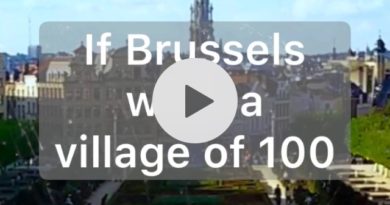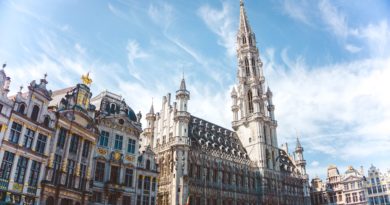Is Brussels still a welcoming city, a safe haven?
One of the first elements that may impact the visitor when arriving to Brussels is its international and multicultural character. The city hosts more than 180 nationalities, who meet, talk and mingle every day in the streets of the capital. It is easy to walk around and notice different clothes, hairstyles, languages and traditions, that co-exist and interact all around the city. Besides the -consistent- expat component, in fact, Bruxellois themselves often have rich and varied origins and backgrounds, and they keep them alive through the daily practice of language and traditions.
In this varied environment, rich of stimuli and influences, it is easy to start thinking about the city’s relationship with migrations: how have migrants influenced the country? How have they been welcomed during time? How have migration laws changed? Are there the same questions and concerns regarding migration?
A first step to understand the city’s approach to the issue is the exposition “Bruxelles, Terre d’Accueil?” hosted at the Jewish Museum of Belgium. The museum selected this specific topic to celebrate its re-opening after two years of inactivity, due to the attack of 2014. The curators of the museum chose the topic for its strong relevance and actuality, together with its strong connection to the city and its character.
“Brussels is a city that has been greatly shaped and influenced by migrants although, during time, it has sometimes shown a close-minded attitude and diffidence towards the newly-arrived. We wanted to open up and reach as many people as possible, presenting how Brussels’ history and laws have changed and adapted to the new comers”, said one of the curators of the exhibition Bruno Benvindo.
“We chose a topic that is not just actual, but it is also very present and real in our everyday life. We want people to think about migration, to question what they see everyday. We want them to leave with questions and thoughts. There is no happy ending here, no sugary conclusion: we just tell a story, Brussels’ story, of how the migratory flows changed and developed and how the city adapted to that. That’s also the point for the question mark in the title: was (or is still) Brussels a welcoming city, a safe haven?”
The exhibition is made of a first introductory part, dedicated to Brussels’ history and migration laws: it describes how the city changed its attitude and perception of migrants during time, from the 1830s to nowadays. It presents (famous or not, male or female) migrants who lived in Brussels or who passed by, spending time in the capital and absorbing its multifaceted spirit. The information focus on different nationalities and different stories, dragging the attention on fundamental topics related to migration and Belgium. For example, it touches upon the conflictual relation between Belgium and Congo, on the famous writers and thinkers who found in Brussels a temporary home (Karl Marx, Paul Verlaine…) , or on the active resistance against the Nazi occupiers in the 1940s.
The staircase that brings to the first floor, where the visit continues, is covered in photos offered by migrants or migrants descendants: they come from different countries and time periods (some of them have been taken at the end of the 19th century) and they remind to the visitors that migrating is not something easy, that one decides to do from one day to the other. Sometimes migrating means leaving everything you love behind, trying to reach a foreign country in which you hope you will feel safe and you will be able to settle down, and the only thing that can comfort you are your memories and photos of the people you love. The first floor of the building is dedicated to interviews to migrants who found in Brussels their new house: they tell their personal stories, noticing the first impact they had with the city and the population, and how they reacted to the different culture.
The expo takes up four floors of the main building of the museum with pieces of art of Brussels-based artists, who tried to portray their perception and experience of migration. The art displayed offers a personal point of view on migration, on the importance of different cultural origins and give some hints and suggestions of what migration is and means for people.
While showing some of the paintings, Bruno Benvindo added that “a museum is not just a place where you can collect and expose objects: it is also a desire of getting in touch with people and make them question and understand their reality. We decided to do that “de-centering” the topic of migration in three ways: we presented an historical portrait of the relationships between Brussels and its foreigners, reminding the complexity of the issue and its cyclical character; we offered a platform for Brussels-based artists and their ideas on migration and diversity; and we gave voice to migrants themselves, letting them describe what migration means, how it feels like, what it implies on a personal level”.
The exhibition will be open until March 2018 and it represents a first, powerful attempt of describing and presenting the topic of migration to Brussels’ population. It is a unique event, that aims to offer clear and complete information to the public, who is let free to decide by itself where to stand on the issue. Moreover, the exhibition reminds to the people of Brussels how important migration has been for the development of the city and the country: would have Belgium been the same without all its incredible influences from all over the world?



